Research Article - (2023) Volume 0, Issue 0
Machine Learning-Based Electroencephalogram (EEG) Applications and its Marketing
Weiqing Gu*,
Bohan Yang and
Ryan Chang
Department of Mathematics, Harvey Mudd College, Claremont, California, USA
*Correspondence:
Weiqing Gu, Department of Mathematics, Harvey Mudd College, Claremont, California,
USA,
Email:
Received: 16-Mar-2023, Manuscript No. IPJNN-23-13595;
Editor assigned: 20-Mar-2023, Pre QC No. IPJNN-23-13595 (PQ);
Reviewed: 03-Apr-2023, QC No. IPJNN-23-13595;
Revised: 10-Apr-2023, Manuscript No. IPJNN-23-13595 (R);
Published:
17-Apr-2023
Abstract
This paper addresses both the various EEG applications and the current EEG market ecosystem propelled by machine learning. Increasingly available open medical and health datasets using EEG encourage data-driven research with a promise of improving neurology for patient care through knowledge discovery and machine learning data science algorithm development. This effort leads to various kinds of EEG developments and currently forms a new EEG market. This paper attempts to do a comprehensive survey on the EEG market and covers the six significant applications of EEG, including diagnosis/screening, drug development, neuromarketing, daily health, metaverse and age/disability assistance. The highlight of this survey is on the compare and contrast between the research field and the business market. Our survey points out the current limitations of EEG and indicates the future direction of research and business opportunity for every EEG application listed above. Based on our survey, more research on machine learning-based EEG applications will lead to a more robust EEG-related market. More companies will use the research technology and apply it to real-life settings. As the EEG-related market grows, the EEG-related devices will collect more EEG data and there will be more EEG data available for researchers to use in their study, coming back as a virtuous cycle. Our market analysis indicates that research related to the use of EEG data and machine learning in the six applications listed above points toward a clear trend in the growth and development of the EEG ecosystem and machine learning world.
Keywords
Neuromarketing; Electroencephalogram; Transcutaneous electrical
nerve stimulation; Electrical impulses
Introduction
This paper gives an essential background about EEG in section
I, including EEG bands, early history, EEG acquisition process,
quantitative EEG, advantages and disadvantages, and EEG
applications. Then, we summarized the most recent papers since
2017 about the six significant applications of EEG in section II.
The primary application includes diagnosis/screening, drug
development, neuromarketing, daily health, disability assistance
and the metaverse. In section III, we collected various abnormal
and normal EEG data, including EEG data for Alzheimer's disease,
Parkinson's disease, MTBI and more. In section IV, we overview
the process of performing machine learning on EEG. Lastly, in
section V, we summarized the market's current status in the aspects of the six applications we have in section II. Our goal is
to comprehensively analyze EEG in both the research and the
market stage. Finally, we give a conclusion to our paper, which
demonstrates that as more EEG applications and markets open
up, more EEG devices will be demanded. This demand would
inspire more machine learning technologies to be developed.
Better machine learning technologies would in turn open up
more EEG markets. This iterative process would push forward
both the EEG and machine learning technologies.
EEG stands for electroencephalogram, which collects brainwaves
from the brain using small metal discs or electrodes attached
to patients' scalp [1]. Brain cells communicate using electrical
impulses and electrodes capture these impulses and record them on wavy lines. Brain waves are the rhythmic electrical impulses
in the brain when the neurons communicate. Neurons help
transport an individual's behavior, emotions and thoughts within
the brain. Brain waves can reveal crucial information about one's
general brain function, including but not limited to stress levels,
thought patterns and emotions.
The EEG brain wave can be separated into different bands:
delta (0.5-4 Hz), theta (4-8 Hz), alpha (8-13 Hz), beta (14-30 Hz),
gamma (>30 Hz) and mu (7.5-12.5 Hz). Each band can be and has
been used to identify and help researchers with prognostic and
diagnostic applications. While no one band is inherently superior
to another, some perform better on data analysis for different
applications.
German Neurologist Hans Berger first discovered alpha waves,
widely regarded as the "father of EEG." Along with beta waves,
alpha waves were among the first brain waves documented
by Berger and he displayed curiosity about "alpha blockage,"
the process where the alpha rhythm is reduced due to visual,
auditory, tactile or cognitive stimulus [2]. In literature, alpha
wave indicate the degree of cortical activation, with them being
the strongest in the back of the head. Alpha waves gained
widespread recognition with the advent of biofeedback theory.
Alpha wave biofeedback gained further interest for having some
successes in humans as a treatment for depression and seizure
suppression [3]. Recently, alpha waves have been used to tackle
the science fiction challenge of psychokinesis or the control of
the movement of an object using the human brain. In 2009, alpha
brain waves were used in a brain-computer interface to control a
robotic device [4].
Hans Berger also discovered beta waves . While the larger
amplitude, slower frequency waves were coined the name "alpha
waves," the smaller amplitude, faster frequency waves were
termed "beta waves." Beta waves are mainly associated with
conscious and logical thinking [5,6].
Gamma waves are fast oscillations typically associated with large-
scale brain network activity and conscious perception. However,
due to its small amplitude and high contamination from muscle
artifacts, gamma waves are not widely studied compared to
other slow brain waves. Nevertheless, research supports that
gamma waves are involved in attention, working memory, and
perceptual grouping. Gamma activity has also been observed in
many psychiatric disorders such as Alzheimer's disease, epilepsy
and schizophrenia. Among the first reports of gamma wave
activity was from a recording from the visual cortex of awake
monkeys [7].
W. Grey Walter first described Delta waves in the 1930s, who
improved on Hans Berger's research and machine. Delta waves
are the slowest and highest amplitude described brainwaves,
although recent studies have described slower (<0.1 Hz).
Materials and Methods
Early history of EEG
EEG is not a novel invention. EEG was invented in the early 1900s. From 1875 to 1890, scientists from the UK found the electrical current in the brain, and researchers from Poland formally defined the brain waves. In 1929, Hans Berger, a German neurologist, developed the first human EEG. Over thirty years after Hans Berger's invention, EEG was mainly inspected visually. From 1961 to 1974, a group of researchers from UCLA started the world of quantitative EEG (qEEG). They used computers to apply Fourier analysis to extract the spectral or frequency features from the EEG signal. From 1974 to the present, EEG began to apply to various fields. For instance, EEG was used by NASA to monitor the brain waves of astronauts on a flight. Engineers developed EEG-controlling robots [8,9]. Researchers experimented with the process of thought sharing using EEG. Figure 1 shows a detailed EEG timeline from 1875 to 2019.
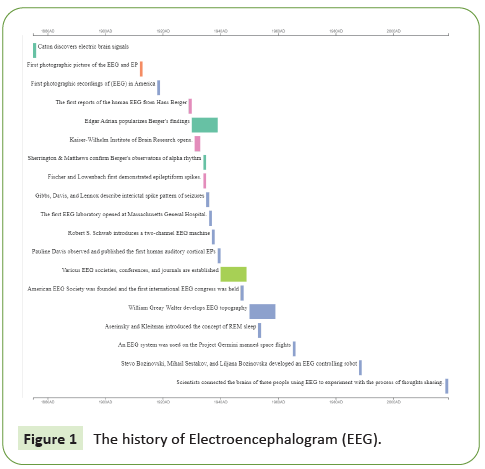
Figure 1: The history of Electroencephalogram (EEG).
EEG acquisition
In an EEG machine, there are mainly five processing components:
1) Electrodes
2) Amplifier
3) Filter
4) Digitizing and
5) Storage
These five components combine to form a well-performing EEG machine.
Electrodes: Electrodes are the first and one of the most critical components. Electrodes capture the electrical impulses from the brain. Therefore, the electrodes can directly affect the quality of the data. Doctors use different types of EEG electrodes in different circumstances. There are two major categories of electrodes: wet and dry electrodes are just the common electrodes. Because it is dry, the electrode can create a high interfacial impedance, drastically decreasing the data quality. However, because they are easy to use and do not need too much preparation, Dry electrodes are used in the most common modern EEG system (Figure 2) [10].
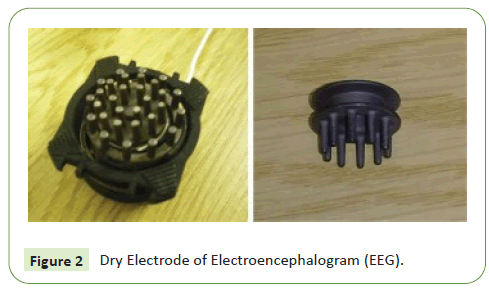
Figure 2: Dry Electrode of Electroencephalogram (EEG).
In contrast with the dry electrodes are wet electrodes. Wet EEG is the gold standard of electrodes as it contains gels to reduce impedance; therefore, wet EEG has relatively lower noises and cleaner recordings. However, it also has many limitations. Wet EEG is prone to degregate or dry; therefore, it is restricted to only short-term monitoring. Furthermore, it requires trained technicians and more time to set up. Lastly, the gel can also cause skin irritation (Figure 3) [11].

Figure 3: Wet electroencephalogram (EEG).
As technology continues improving, many special types of electrodes are invented. For instance, a special wet EEG electrode uses solid gel. This electrode improves the drying problem through the hydrophilic hydrogel network. Furthermore, the Incorporation of Ionic Liquids (ILs) into the wet electrode makes the electrodes long-term lasting, although the long-term toxicity of the chemical substance remains a concern [12,13].
Lastly, the combination of dry and wet electrodes, semi-dry electrodes, has become a popular choice. This is because it minimizes the area exposed to the air, which makes it last longer than wet electrodes. On the other hand, because it is semidry, the contact impedance is lower than dry electrodes, which significantly improves the signal-to-noise ratio. Also, because it uses less gel, the semi-dry improved user comforts compared to wet electrodes [14]. In short, the semi-dry electrodes are a combination of dry and wet and can potentially become the golden standard in the future.
Amplifier: The EEG amplifier amplifies and converts the analogue electrical signals from the sensor into digital signals that the computer can process.
Filter: Digital filtering filters out unwanted signals, mostly noises. The common practice is to apply a low-pass filter and a high-pass filter. The low-pass filter filters out frequencies less than 1 Hz, which are not in the range of the human electrical impulses and are considered noises. The high-pass filter filters noise above 40 Hz or 50 Hz [15,16].
Digitizing: The EEG digital converter converts the EEG data from analog to digital domain so that the data can be processed into the computer.
Storage: There needs to be a space to store the EEG data after acquiring it from the human and before the data gets transferred to other places.
Advantages and disadvantages
There are three main advantages of EEG. First, an EEG device collects data through electrodes. The number of electrodes on EEG devices can be adjusted based on the need, which means the size, price and complexity of the EEG device is very flexible. The smallest EEG device can be as small as an Air pods, while the larger EEG device can be equivalent to a desktop computer. The price of EEG also can vary from hundreds to thousands of dollars. We have collected data about several EEG devices in section 5.3 EEG Devices. The EEG device can contain from 1 electrode to ten or twenty electrodes. Because of its flexibility, the EEG acquisition system can be embedded into many devices, from headphones to VR devices (See our EEG Company Spreadsheet for more information). This allows EEG to apply to many fields, from diagnosis of neurological disorders, long-term monitoring prognosis and drugs. The second advantage of EEG is its high temporal resolution, which can measure brain activity in milliseconds [17-19]. This enables EEG to detect any minor brain disturbances and problems in the early stages. This allows EEG to benefit the medical fields: from the prognosis of diseases to daily health regulation [20].
Lastly, EEG is non-invasive. Therefore, it does not cause any harm to the human body [21]. This enables EEG for long-term monitoring: depression warning, the prognosis of diseases and sleep scoring. Also, this property allows EEG to be used on nearly everyone.
However, there is also a critical limitation of EEG. EEG has a relatively low spatial resolution. Because EEG monitors activity in large groups of neurons, it is difficult to pinpoint activity to a precise location in the brain [20]. EEG can tell "when" an activity occurs, but it cannot tell you "where."
EEG applications
EEG has many unique properties. For example, EEG has high temporal resolutions, which allows it to detect small changes in the brain. On the other hand, quantitative EEG uses mathematical processing on EEG data, which minimizes the need for electrodes. This makes EEG devices cheap, portable and easy to use. These unique properties give EEG a wide use of applications in real-life: from disease diagnoses, drug development, neuromarketing, disability assistance and rehabilitation, prognosis and dailyemotional check, to the future metaverse.
This section of the paper will cover state-of-the-art EEG applications and up-to-date research studies. This section will summarize the papers in six different categories:
1) Disability Assistance and Rehabilitation
2) Neuromarketing
3) Prognosis and Daily Health Check
4) Metaverse
5) Drug Development and
6) Disease diagnoses
All of the papers are after 2017 (Figure 4).
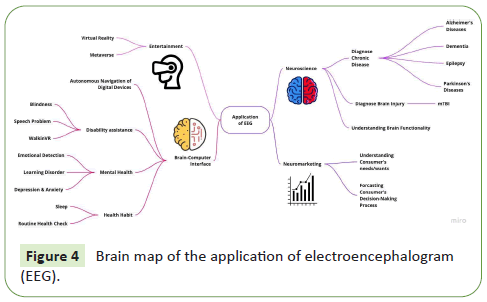
Figure 4: Brain map of the application of electroencephalogram (EEG).
Diagnosis/Screen
First, EEG can be used to diagnose neurological diseases. It is already widely used as a tool to diagnose epilepsy. If the EEG of a patient has spikes and sharp waves, which are so-called "epilepsy waves" this is an indication of epilepsy (Figure 5) [22].

Figure 5: Indication of epilepsy spikes.
Several studies also indicate EEG's potential for the diagnosis of diseases such as Mild Traumatic Brain Injury (m TBI), Alzheimer's Disease (AD) and Parkinson's Disease (PD) [16-18]. For example, on EEG data, Pirrone performs supervised machine learning, such as Decision Tree, Support Vector Machine and K-Nearest Neighbor and reaches 97% when performing binary classifications between healthy controls and AD patients. Lee also performs convolutional-recurrent neural networks on EEG data, resulting in a 99.2% accuracy when classifying PD over healthy controls [23].
We selected six studies from our other survey paper, "Machine Learning-Based EEG Analysis for Mild Traumatic Brain Injury: A survey, to be included in this subsection. Please note that the six papers we covered in this section are discussed in detail in the other survey paper [24-29]. Instead, we will discuss the trends we found, some limitations of this application and some suggestions we have. Due to the focus of the other survey paper, all six papers use qEEG data to train machine learning models to diagnose mTBI. All of the papers use some mathematical processing methods, such as discrete Fourier transform, wavelet transform and others. Dhillon uses mouse EEG, while others use human EEG [25]. By comparing the accuracy and the machine learning models, this survey shows that the combination of deep learning and support vector machines proves to be adequate to attain a high accuracy result.
Although all of the accuracies in the table are relatively high and Lai's model attained 100%, most of the studies are binary classification: the models classify between normal and abnormal [24]. Therefore, these models ability to classify different neurological diseases, such as mTBI and AD, is still unknown. For example, in one of the studies we previously discussed the model attains 97% and 95% when performing AD vs. Healthy or Mild Cognitive Impairment (MCI) vs. Healthy. However, when the researchers perform classification between two disorders, MCI vs. AD, the accuracy drops to 83%. Furthermore, when researchers perform ternary classification, such as MCI vs. AD vs. healthy, the accuracy drops to 75%. This shows that EEG lacks the specificity to differentiate between disorders when performing classification [17].
In the survey of EEG application in diagnosing diseases, we conclude that EEG can be used to diagnose epilepsy, but its ability to diagnose other neurological diseases remains in doubt. We suggest researchers should focus on increasing EEG's specificity, that is, its ability to differentiate one disorder over another. More studies on multi-classification diagnoses need to be performed to use this technology to help patients and doctors in hospitals. Although the ability of EEG on multi-classified diagnosis is still in the air, EEG has proven its ability on prognosis or screening due to its high temporal resolution, non-invasive, and fast to use. Lai, Dhillon and Bazarian all proved that EEG screening of diseases is fast and portable, and they have the potential to be used in reallife situations, such as a quick classification of athletes for them to return-to-play or use during the physical examination to detect any brain abnormalities.
Results and Discussion
Drug development
Electroencephalogram has long been used as an assistive tool in drug development. More commonly known as Pharmaco-
electroencephalogram, the process has gained popularity in
clinical trials due to its ability to identify biomarkers in the early
stages. Moreover, EEG is vital in inclusion and exclusion criteria
for safety and efficacy evaluations [30].
We summarized six publications that utilized EEG during the drug
development process in detail below:
Koyama experimented on awake rats and tested three
types of drugs: pregabalin, EMA401 and minocycline. EEG
screened all the mice. The result shows a parallel trend in the
reversal of theta power but not for minocycline. The actual
effect of the drug validates the result. Breidenbach suggests that
EEG theta power can be used to detect false positive and false
negative outcomes of the withdrawal reflex behaviour [31].
One study, led by Breidenbach focused on assessing the
side effects of drugs. They performed a series of experiments on
dogs who have seizures by introducing three different doses. The
result shows that EEG can help dose selection to improve safety
margin [32].
Lee designed a microfluidic system for continuous EEG
monitoring. In their experiment, they recorded EEG from Valproic
Acid (VPA) treated zebrafish and demonstrated the suppression of
seizures, proving their design's effectiveness as a stable screening
method [33].
Hua uses qEEG to assess the effectiveness of their new
drug ATH-1017's treatment of Alzheimer's disease [34].
Biondi uses transcranial magnetic stimulation (TMS-EEG)
to analyze the effects of three anti-epileptic drugs: Lamotrigine,
Levetiracetam and XEN1101. Levetiracetam increased theta,
beta, and gamma power. Lamotrigine decreased theta power.
XEN1101 increased delta, theta, beta and gamma power. This
result proves that EEG has the potential to indicate the effects of
drugs and therefore help doctors to develop the drugs [35].
• Staner investigates how sleep-EEG data can help to develop
drugs such as antidepressants and other drugs related to
neurological disorders [36].
From our survey, we found that the objective or mainstream of
the current EEG drug development is using EEG to assess the
effect of their drugs by looking at the increase or decrease of
the EEG power bands. While there is substantial research on the
topic, there are minimal commercial and clinical uses. In most
studies, EEG or qEEG was used as a guiding tool in tandem with
other forms of testing.
Disability assistance and rehabilitation
Furthermore, integrating EEG into the Brain-Computer Interface
(BCI) can help rehabilitation and disability assistance for blindness,
speech disorder, motor disability and other disabilities. In 2018,
Dev’s team designed an EEG-based brain-controlled wheelchair
for quadriplegic patients [37,38]. Quadriplegic patients cannot
move any organs below their necks. In this way, quadriplegic
patients can still travel using a wheelchair with their attention
level. In the same year, Souza created a virtual environment-based system supported by EEG to help blind wheelchair users [39]. By
integrating EEG and Virtual Reality (VR) with 3D sounds into the
system, blind wheelchair users can practice in a safe environment
until they are used to identifying their location and surroundings
with other senses. In the same year, Mroczkowska confirmed
using EEG-Neurofeedback (EEG-NFB) to rehabilitate speech
disorders in patients after stroke. Their experiment proves that
EEG-NFB can be more effective in helping stroke survivors regain
verbal fluency than traditional neurophysiological therapy [40].
We summarized ten recently published papers about EEG
application on disability assistance and rehabilitation in detail
below.
Zhang proposes a 7-layer deep learning model for intent
recognition. The result attains a 95.53% accuracy on intent
recognition. Furthermore, the model can be built into robots
or home automation to help elderly or motor-disabled people
control smart devices [37].
In 2018 an EEG-based Brain Controlled Wheelchair is designed
to help the movement of quadriplegic patients. These patients
can operate the wheelchair through their attention level and eye-
blink [38].
• Souza designed a wheelchair adapted with the support of VR and
EEG for the training of locomotion and individualized interaction
of wheelchair users with visual impairment. The VR provides 3D
sounds to stimulate real-life scenarios for blind users. Within
the wheelchair, a multilayer computer rehabilitation system was
developed that incorporated natural interaction supported by
EEG (Figure 6) [39].

Figure 6: Electroencephalogram EEG-controlled wheelchair and
virtual environment wheelchair for blind users.
• Mroczkows separated 58 ischemic stroke patients into
experimental and control groups. All patients received
neuropsychological therapy, while the experimental group
received additional EEG-NFB therapy. After testing the verbal
fluency, the result shows that the combination of EEG-NFB
therapy with neuropsychological therapy can improve stroke
patients' verbal fluency [40].
• Nafea created a brainwave-controlled system that allows the user to switch on and off home applications using blinking and
attention levels. This creation was intended to help the disabled
and elders and proves the potential of EEG applying for disability
assistance [41].
• A group of researchers designed a meal assistance robot to feed
the disabled and elders food. First, they used EEG Steady State
Visually Evoked Potential to allow the user to identify the food to
select. Then, a visual servoing algorithm localized the position of
the mouth. Lastly, a mouth open/close status detection system measures the user's willingness to eat at the moment. Fifteen
subjects in different experiments are used to validate the design
[42].
Casey developed a BCI-controlled robotic arm to help
disabled people in their daily life. The team tried two sources of
data: EEG and EMG. The results showed that EMG is a very reliable
source of signals. However, EEG contains sufficient detection of
signals and is not ready to use in clinical trials. This paper points
to a limitation on using EEG for disability assistance [43].
• Jacob proposed Artificial Muscle Intelligence with Deep Learning
(AMIDL) system to help the movement and communication of
stroke patients. The system transforms EEG into body movements
by the microcontroller and Transcutaneous Electrical Nerve
Stimulation and the movements are executed by artificial muscle
movements. The system also allows communication-based on
specific movements that EEG indicates through an online gesture
recognition algorithm [44].
Parios studied 23 paralyzed chronic stroke patients and
compared their motor cortex activation with the control groups.
They found a significant difference between severe and moderate
motor deficits in the EEG alpha-beta bands power ratio of the
contralesional hemisphere while moving the paralyzed hands.
This finding shows the potential of EEG to monitor patient
recovery progress [45].
Chinta proposed an imagined world prediction system using CNN to analyze the EEG data. CNN can recognize the words
imagined by the patients through visual stimuli. Their team used
Morlet Continuous wavelet transform to process the data and
attained a 90.3% using CNN model Alexnet. This technology
can help people with speech disabilities fully communicate with
others [46].
There are two main directions of the research; disability of
communication or movement. We reviewed the research from
2017 to 2022, and this research shows that the application is
progressing in a promising direction [47].
However, there are still some disagreements. In their study in
Casey showed that EMG is a more reliable method for
assistive technology control than EEG. They claimed that EEG
showed insufficient signal detection and was inadequate for
disability assistance [43]. Lazarou also stated that most current
published works do not have sufficient clinical evidence of daily
use by disabled people.
From our survey, there is enough evidence to show that the
application of disability assistance has sufficient research studies; people created specific EEG-based devices to target a group of
disabled people. However, there is still debate on the usefulness
of EEG-based disability assistance devices when applied in real
life. In the future, researchers should focus on expanding the
detected signals and perform their studies with clinical trials in
daily settings.
Neuromarketing
EEG also has an application in neuromarketing. It can be used
to predict consumers' decision-making process. In detail, we
summarized six current published papers about EEG application
on neuromarketing below. Most of these papers focus on
consumer preferences, which is "like" or "dislike" a specific
product, brand, etc [48].
Mashrur proposed a Market Brain prediction system to
predict consumer preferences. First, they recorded the EEG while
showing the volunteers five product endorsements. Then, they
used Wavelet Packet Transform and SVM, achieving a 96.01%
accuracy [49,50].
In 2019 in their 2019 experiment, Molnar-Nik’s group used EEG
data to analyze consumer preferences in the advertisements for
different phone brands. From EEG power, Golnar-Nik located
the frontal and Centro-parietal locations to be the most critical
in predicting the “like” and “dislike” decisions of consumers. In
the end, they achieved an 87% in predicting consumer decision-
making incidence (Figure 7) [51-54].
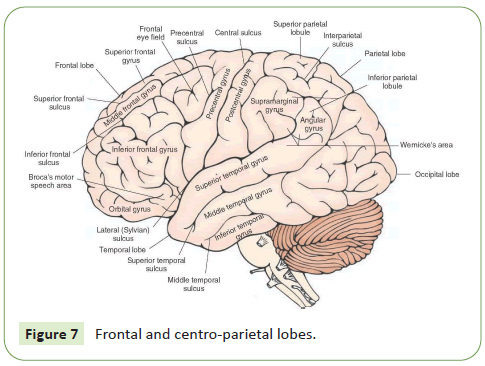
Figure 7: Frontal and centro-parietal lobes.
• Ciorciari explores the relationship between emotional
intelligence, commercial advertising messages, and consumer
behaviors. The study recorded EEG from 45 participants while the
participants were watching a series of ads. The study claims that
different types of advertising messages can attract people with
different levels of emotional intelligence [50].
Sun conducts a study on the consumer decision-making
of online shopping. The EEG is recorded from volunteers watching
a series of products and prices. After analyzing it, Sun found that
rating is more crucial in influencing consumers’ online purchasing
decisions than the price [51].
• Aldayel performs an EEG-based preference recognition study
and uses different ML models to predict consumers’ behavior on
specific products based on EEG data. The result shows that the
DL model attained the highest accuracy, 94%, compared to other
ML models [52]
Phutela researches to understand a consumers’ positive
and negative reactions to ads and products by analyzing EEG
signals from the volunteers while they are watching different ads.
ML models such as Naive Bayes (NB), SVM, K-Nearest Neighbor
(KNN) and Deep Learning (DL) are used to predict consumers’
reactions. As a result, SVM and DL have the highest accuracy at
56% [53].
Three of the six papers utilized ML models to create intelligent
consumer behavior prediction systems. Aldayel and Mashrur
achieve high accuracies: 94% and 96.01%, respectively [49, 52, 53]. In addition, both papers prove that SVM is the most effective
tool in classifying consumers' like or dislike; SVM achieves 90% or higher in both papers. However, Phutela uses the Naive Bayes
Classifier but only attains 61% in subject-dependent analysis.
The majority of the papers prove that EEG has the potential to be
used in neuromarketing in their experiments. However, there is
a lack of evidence of the actual effectiveness of EEG when used
in real-life situations: whether the companies' sales can increase
by using these EEG consumers' behavior analysis. Therefore,
we suggest that researchers do more studies to validate the
effectiveness and consistency of EEG in neuromarketing and its
usefulness in the market.
Daily health
EEG has an excellent capability to use as a tool of prognosis
due to its high temporal resolution. This makes EEG enable to
detect small disturbances in the brain. In recent years, EEG has
cemented its spot as the most widely used prognostic tool in
clinical examinations and is accessible both in hospitals and at
home; it is used in prognostication and ruling out subclinical
seizures.
We summarized a total of 5 papers that utilized EEG as a tool to
interpret and analyze data in order to continue health checks. We
reviewed each paper in detail below.
Cai focused their study on the automatic classifying of
depression. The EEG data is acquired from 213 subjects. A finite
Impulse Response filter combining the Kalman derivation formula
is used to denoise the data. Discrete Wavelet Transformation
and Adaptive Predictor Filter extracts 270 linear and nonlinear
features. These features are then sent into the Minimal-
Redundancy-Maximal-Relevance (MRMR) feature selection
technique to reduce the dimensionality of the features. Lastly,
SVM, KNN, Classification Tree and Artificial Neural Network are
used to classify depression. KNN has the highest accuracy of
79.27% [55-57].
Mousavi proposed an automatic sleep stage annotation
method, Sleep EEG Net, composed of CNNs. Time-variant
features, frequency information and long short-term context
between sleep epochs and scores are extracted as features. They also applied a loss function to avoid class imbalance problems
their method results in 84.26% [58,59].
Melentev used EEG and ML methods to classify the
professional level and tiredness of the eSports players. After
filtering and removing the artifacts, they used statistical
differences before and after the game as features for two binary
classification problems: player professionalism and health rate.
They result in a 95% F1-score to detect professional players and a
90% F1-score to classify player health [60].
Satapathy proposed an Ensemble Learning Stacking Model
(ELSM) using EEG data to classify sleep stages. They extracted
28 features and used the Relief-based Weight Feature Selection
Algorithm to screen features and Pearson correlation coefficients
to eliminate redundant features. Their proposed ELSM achieved
99.34%, 90.8% and 98.5% in three different datasets testing [59].
Liu performs a study on the classification of major
depressive disorder. The EEG data are acquired from 29 healthy
subjects and 24 patients with severe depression. Using the
proposed end-to-end deep learning framework results in an
accuracy of 90.98% [61].
Cai and Melentev focused their studies on depression; Mousavi
and Satapathy focused on sleeping; Suhaimi focused on
tiredness. Nearly all papers we collected utilized some form of
machine learning to process the EEG data. Among these papers,
Satapathy's ELSM classifying sleep stages and Suhaimi's method
classifying professional level and tiredness of the eSports players
seem promising.
Metaverse
Metaverse is a novel term that has come to people's vision in
recent years. As metaverse became popular, related technologies,
such as AR and VR, also got much attention. As a result, there
has been a recent increase in applying EEG devices and research
towards VR and AR technologies, especially by large tech
companies such as Google, Apple and Meta [62].
We collected seven papers that implemented EEG and focused on
developing AR or VR-related products. We reviewed each paper
in detail below.
Vortmann focused on solving a one problem in AR
applications: the interference of virtual objects with the user's
current attentional focus. Thus, an EEG-based classification is
proposed using the Linear Discriminant Analysis classifier. As a
result, they achieved 85.37% accuracy in classifying the virtual
objects in AR and the current attention of the user [63].
Amoolya created an emotional detection system based
on EEG signals. The most notable feature of this work is the
creation of a readily accessible and easy-to-use App with AR. This
system has the potential to embed into the future metaverse
and allows each user to express their emotions on their virtual
character [64].
Liu designed a Res Net-based multi-feature fusion method
for motor imagery task classification. To address the limitation
of EEG, such as insufficient information or low signal-to-noise ratio, Liu used three time-frequency transforms, including morlet
wavelet transform, multi-window time-frequency transform and
stockwell transform to extract features. The features are then
sent into ResNets for further feature extraction and classification.
The model results in 97.86% accuracy [65].
• Researchers Guo Honyu and Gao Wurong constructed
an experiential situational English-teaching scenario and
Convolutional Neural Networks (CNNs) Recurrent Neural
Networks (RNNs) fusion models to recognize students' emotion
EEG in experiential English teaching during the feature space of
time domain, frequency domain and spatial domain (Figure 8)
[66-69].
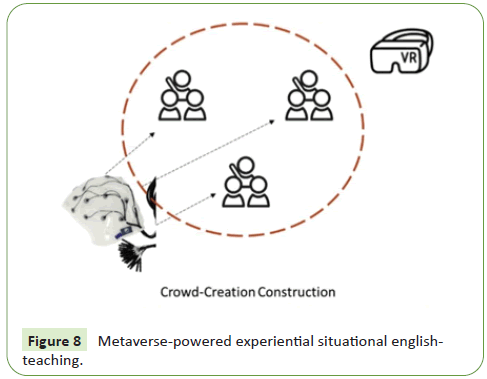
Figure 8: Metaverse-powered experiential situational english-teaching.
• Lee developed a Brain-To-Speech (BTS) system using EEG
for real-world smart communication using brain signals. They
proposed pseudo-online analysis and achieved 47% when the
chance level was 7.7% and 76% when it was 50% (Figure 9) [70].

Figure 9: Imagined-speech-based-smart-communication system.
• Seok Hee Oh aimed to verify the effectiveness of VR cognitive
training by measuring the sense of presence and EEG in children
with ADHD. However, after running various experiments, they
concluded that EEG could only be used as an auxiliary means
as no significant EEG changes were observed after VR cognitive
training [71].
Our survey found many exciting innovations, from an emotional
detection system, motor imagery task classification and experiential English Teaching System to a Brain-to-speech system.
As these technologies mature and become more advanced, more
functions will be added to the virtual world and one day, humans
will be able to achieve the true metaverse. However, for now,
more research and AR and VR studies are required.
EEG data
During the process of our literature review, most papers did
not publish the EEG datasets that were used in their research.
Moreover, EEG data for certain diseases are especially difficult
to access or find given the Health Insurance Portability and
Accountability Act or HIPPA, which prevents sensitive patient
data from being disclosed without the patient's knowledge or
consent. Nevertheless, this data is vital in machine learning and
artificial intelligence research. Both normal and abnormal EEG
signals must be present to prevent biases in diagnostic ML and
AI software. In this section, we have collected twelve various EEG
datasets: including seizures, Parkinson's disease, Alzheimer's
disease, depression, sleep disorder, mTBI, alcohol and three
normal public EEG data repositories. We hope our data collection
can inspire and help other researchers who are interested in
research but do not have EEG data.
While these datasets are available to the public, there are still
many diseases and scenarios where EEG data is scarce. Diseases
such as Epilepsy, Motor Imagery or Seizures are among the most
flushed out and well-documented illnesses by EEG. However,
illnesses such as mild traumatic brain injury severely lack publicly
available EEG datasets. The lack of publicly available EEG datasets
is ironic, given that hundreds of thousands of EEGs are recorded
daily across the country and globe. Furthermore, a relatively
small amount of this data is publicly available to the research
community in the form of meaningful and usable machine
learning data. Massive amounts of public EEG data would allow
researchers to use advanced machine learning algorithms to
uncover new diagnostic methods and confirm clinical practices.
Additionally, data collected in clinical settings rather than tightly
controlled research environments are preferred. This is because
"clinical-grade" data is intrinsically more variable with respect
to parameters such as environment, electrode location, mood,
noise, etc. Recording this variability is vital for developing long-
lasting, high-performance technology with viable real-world
applications (Table 1) [72-76].
| Name |
Disease |
Volunteers |
Data size |
Data file type |
| Jason Chieh Lee |
Concussion |
20 patients |
- |
Matlab |
| Alzheimer's Classification |
Alzheimer's Disease and Mild Cognitive Impairment |
80 people (normal vs.AD vs. MCI) |
- |
csv |
| Diagnosis of Alzheimer’s disease with Electroencephalography in a differential framework |
Alzheimer's Disease |
169 subjects |
30-channel EEG at 256 Hz at rest with close eyes in 20 minutes |
- |
| TUH Abnormal EEG Corpus |
Seizure and Alzheimer's Disease |
Unknown |
- |
- |
| Predict |
7 Parkinson's Disease, 3 mTBI, 1 OCD, 2 Depression and 1 Schizophrenia |
total 496 patients |
unknown |
varies |
| National Sleep Research Source |
Sleep Apnea & a variety of other sleep EEG recordings |
Multiple datasets |
Varies by dataset |
Varies |
| TD Brain Clinical Lifespan Database |
ADHD, OCD, Depression, and Subjective memory complaints |
1247 |
26 channel, 2 minutes eye open, 2 minutes eye closed |
- |
| CHB-MIT Scalp EEG Database |
Intracable seizures |
22(5 males, ages 3-22 and 17 females, ages 1.5-19) |
23 signal (24 or 26 for rare cases) |
ZIP file |
| Continous EEG |
alcoholic patients |
122 |
64 channel at 256 Hz for one second |
unknown |
| Narayanan Lab |
Multiple but more Parkinson's |
varies by dataset |
varies by dataset |
unknown |
| Open Datasets in Electrophysiology |
Motor, imagery, auditory, and many more |
varies by dataset |
varies by dataset |
unknown |
| EEG Datasets |
Motor, imagery, auditory, and many more |
varies by dataset |
varies by dataset |
unknown |
Table 1: EEG data is characterized as volunteers, data size and data file type.
Machine learning using EEG
Due to the complexity of the EEG data, most of the EEG analysis
we covered in section II EEG Applications used machine learning
to achieve their goal. Machine learning includes data acquisition,
processing, feature extraction and machine learning. We already
covered the entire process of EEG data acquisition in 1.3 EEG
Acquisition. The EEG system has five main parts: electrodes,
amplifier, filter, digitizing and storage. After the EEG data is
collected, it must go through data processing methods to remove
any noises and artifacts. This can be done by visual inspection
or statistical methods to remove those outliers. The third part
is feature extraction. Feature extraction selects those critical
features to later feed into the machine learning models. Standard
EEG feature extraction methods include Fourier transform, which
can be broken down into either the fast Fourier transform or the
discrete Fourier transform. Wavelet analysis is also a prevalent
feature extraction method. Also important to note that most
deep learning methods, such as Convolutional Neural Networks
(CNN) or Recurrent Neural Networks (RNN), can automatically
extract features. The last part is machine learning methods.
The most common machine learning methods for EEG are
summarized below in Figure 10. The figure includes 27 machine
learning methods, broken down into classification, clustering, deep learning and dimensionality reduction. In our survey Paper
Machine Learning Based EEG Analysis for Mild Traumatic Brain
Injury: A survey, we covered a comprehensive survey with stateof-
the-arts on EEG machine learning mTBI diagnosis. In that
paper, we summarized all four processes described above in
detail. The mTBI survey concludes that Support Vector Machine
(SVM) is the best machine learning method to diagnose mTBI as
it has higher accuracy than other ML methods. Deep learning,
such as LSTM and CNN, also shows promising accuracy. Lastly, the
mTBI survey pointed out that a combination of SVM with a deep
learning method is the best architecture for diagnosing mTBI
though the results are usually unexplainable as the features are
automatically extracted through layers.
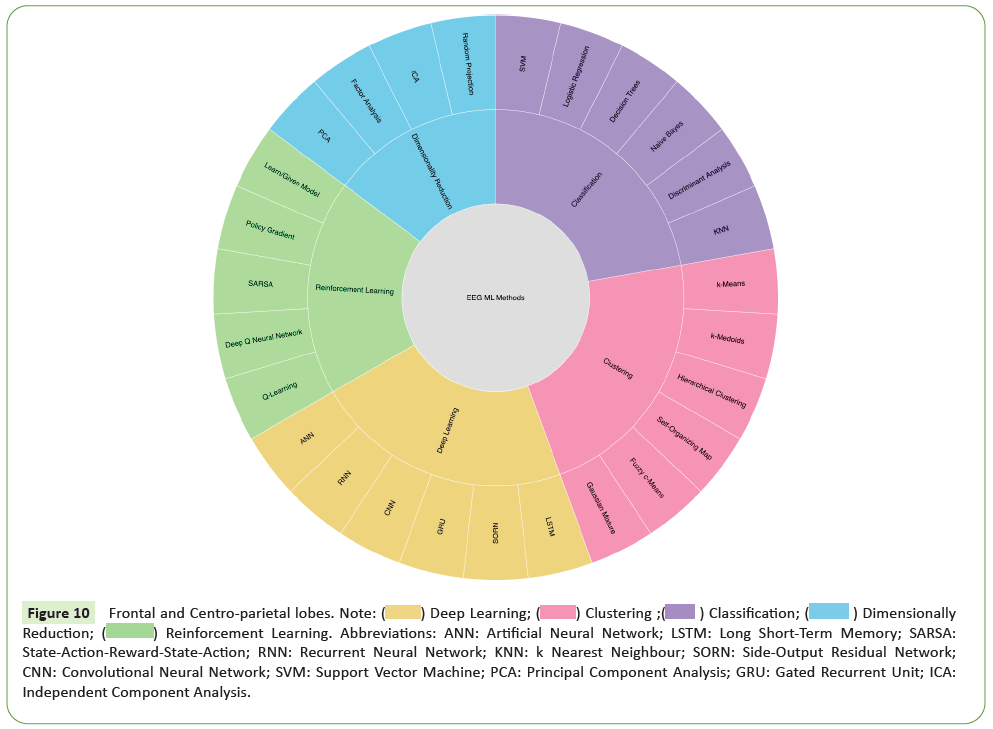
Figure 10: Frontal and Centro-parietal lobes.
Note: ( ) Deep Learning; (
) Deep Learning; ( ) Clustering ;(
) Clustering ;( ) Classification; (
) Classification; ( ) Dimensionally
Reduction; (
) Dimensionally
Reduction; ( ) Reinforcement Learning. Abbreviations: ANN: Artificial Neural Network; LSTM: Long Short-Term Memory; SARSA:
State-Action-Reward-State-Action; RNN: Recurrent Neural Network; KNN: k Nearest Neighbour; SORN: Side-Output Residual Network;
CNN: Convolutional Neural Network; SVM: Support Vector Machine; PCA: Principal Component Analysis; GRU: Gated Recurrent Unit; ICA:
Independent Component Analysis.
) Reinforcement Learning. Abbreviations: ANN: Artificial Neural Network; LSTM: Long Short-Term Memory; SARSA:
State-Action-Reward-State-Action; RNN: Recurrent Neural Network; KNN: k Nearest Neighbour; SORN: Side-Output Residual Network;
CNN: Convolutional Neural Network; SVM: Support Vector Machine; PCA: Principal Component Analysis; GRU: Gated Recurrent Unit; ICA:
Independent Component Analysis.
Market analysis
Applications in market: In our search, we collected 131 companies
about EEG. We then separated each company into one or two
of six categories: Disease/Screening, Neuromarketing, Drug
Development, Disability/Aged Rehabilitation and Assistance,
Daily Health and Metaverse. Each category is a part of the larger
EEG ecosystem and while they do not encompass the entirety of
the current EEG research and market space, they offer an insight
into the current state of the EEG market space (Figure 11).
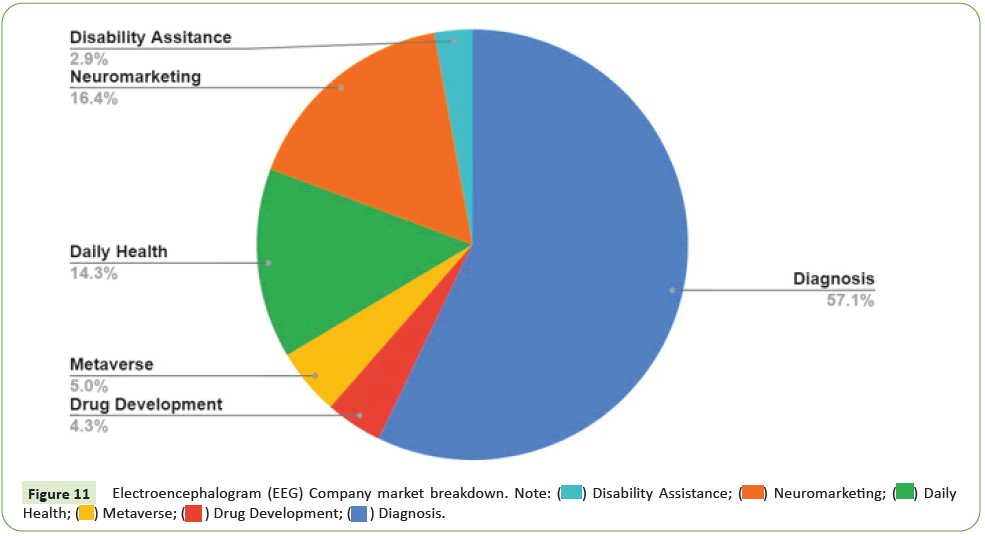
Figure 11: Electroencephalogram (EEG) Company market breakdown.
Note: ( ) Disability Assistance; (
) Disability Assistance; ( ) Neuromarketing; (
) Neuromarketing; ( ) Daily
Health; (
) Daily
Health; ( ) Metaverse; (
) Metaverse; ( ) Drug Development; (
) Drug Development; ( ) Diagnosis.
) Diagnosis.
Companies mainly focused on diagnostic services, and devices
were categorized into the diagnosis and prognosis categories.
Moreover, companies that solely create devices such as caps or
amplifiers were also categorized in the diagnosis and prognosis
category. Of the 131 companies we found, 80 companies had
some degree of involvement in the diagnosis and prognosis.
This category was separated into two further subcategories:
Devices and Services. Companies that focused on services varied
in the solutions they offered. For example, SleepMed Inc., is a
company that focuses on high-quality streamed EEG recording
for sleep quality. SleepMed Inc., is just a few companies offering
24/7 ambulatory EEG services. Another common type of service
company was companies focused on analyzing EEG data. These
companies often have proprietary software that analyzes, cleans
and/or filters raw EEG recordings and 24-hour assistance to
address client needs. For example, Neuronostics utilizes its BioEp
software to detect epilepsy. They are just one of many companies
we collected which employ diagnostic or analytic software to
process and make decisions on EEG data. Device companies were
also quite prominent in our market search. Companies like Brain
Scope are well-established and have many FDA-approved EEG
devices and software. EEG devices show a wide degree of variation
from caps and amplifiers used in research to headbands focused
explicitly on specific diseases or illnesses. For instance, Ceribell
provides an FDA-approved EEG headband, the Rapid Response
EEG, which focuses on quickly diagnosing Epilepsy and Seizures.
In Figure 12, it can be seen that diagnostic services are the more
predominant type of EEG Diagnosis Company. It's also worthy
to point out that most of these EEG diagnostic companies are
focused on epilepsy and seizures. While not as prominent as EEG
diagnosis service companies, EEG diagnosis device companies are
still a mature sector of the EEG ecosystem.
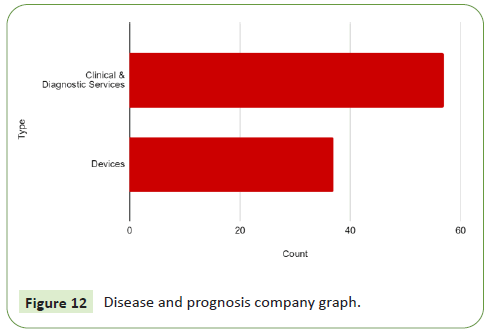
Figure 12: Disease and prognosis company graph.
Neuromarketing is the category with the second highest number
of companies. This category mainly focuses on using EEG
recordings to aid in the User Interface (UI), User Experience (UX),
advertisement and more. EEG recordings are used to measure the
user's engagement, emotion and focus, which are then used to
help make websites, advertisements or apps more user-friendly.
The scope of neuromarketing is vast and encompasses a broad
spectrum of companies, from news websites to e-commerce.
Neuromarketing is among the most promising fields of EEG. For example, Brain engineers utilizes EEG to record engagement and
user emotion and identify any pain points in UX. Using EEG in
marketing has allowed companies, whether Fortune 500 or
small businesses, to improve user engagement and experience.
While a relatively premature sector of the EEG ecosystem,
neuromarketing shows immense potential and serves as the
bridge between neuroscience and business.
Next, daily health was the third most common company in our
market search. Daily health companies were categorized as such
if they focused on depression, sleep quality or other emotional
disorders. In Figure 13, all illnesses that daily health companies
addressed were counted and documented. From the figure, daily
health companies which focused on monitoring and sleep were
the most numerous. These companies focused predominantly on
observing and controlling sleep quality and life. Other companies
also focus on stress, anxiety, depression and a wide variety of
other mental illnesses. For example, Enophone is a company
that offers EEG headphones; eno has embedded EEG sensors to
track and monitor mental health and fitness. The EEG recordings
allow distractions and other obstacles to be identified and
treated while mental performance is optimized. While the daily
health category is not as numerous as diagnosis and prognosis or
neuromarketing, the field is well-developed, and a broad range of
companies address various illnesses in daily life.
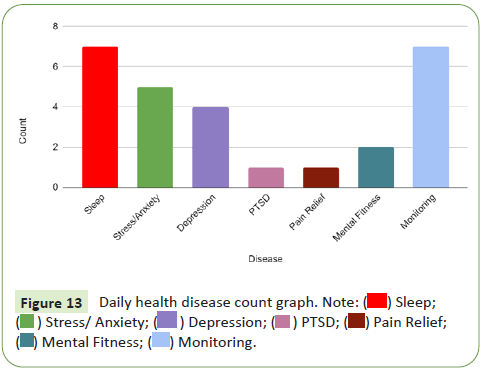
Figure 13: Daily health disease count graph.
Note: ( ) Sleep;
(
) Sleep;
( ) Stress/ Anxiety; (
) Stress/ Anxiety; ( ) Depression; (
) Depression; ( ) PTSD; (
) PTSD; ( ) Pain Relief;
(
) Pain Relief;
( ) Mental Fitness; (
) Mental Fitness; ( ) Monitoring.
) Monitoring.
Metaverse companies were categorized as such if they focused
on virtual reality and augmented reality. In our search, there were
only seven companies that met this criterion. Contrary to popular
belief, metaverse companies are not all focused on the gaming
or entertainment industries; most companies we collected use
EEG and VR/AR tech for research. However, some companies still
aim to combine EEG and VR to create games. One such company
is Neurable, which in 2017 unveiled the first EEG-controlled
VR game. Again, however, most companies use EEG and VR as
research and development tools.
Drug development companies are companies that utilize EEG as a
way to develop and test pharmaceutical drugs. In our search, we
only found six drug development companies. These companies mainly focus on utilizing EEG recordings to test and validate
drug side effects and their impact on the user’s psyche. For
example, Beacon Signals is a company that uses machine learning
algorithms to analyze EEG and find neuro biomarkers during the
drug development process. Most drug development companies
are directly involved in the clinical trial process and the addition
of EEG attempts to speed up the usually decades-long process.
Finally, disability rehabilitation and assistance companies produce
devices or software to help disabled individuals. This category had
the smallest number of companies in our category, which may be
attributed to its relatively short development. Most devices are
still in the research and development stage, while most companies
we found mainly focus on vision or hearing impairments, stroke
patients or other mental disabilities. Physical disabilities such as
amputation or cerebral palsy are not as well addressed as other
disabilities. While this field is relatively premature, we do find a
lot of research papers related to this application in 2.3 Disability
Assistance and Rehabilitation section. Our hypothesis is that the
designs in 2.3 Disability Assistance and Rehabilitation might not
be very useful or cost-effective in the business market. Many of
those devices might cost more and have higher embedded risks
compared to human-care. In addition, this contrast between the
research stage and the market stage shows that humans still do
not trust robots or automation on life-mattered things.
EEG device market
In this survey, we have summarized the 22 most common
headsets used to collect EEG data. In our table, the majority of the
headsets use dry EEG electrodes, and only two of the headsets
use wet EEG electrodes. The Table 2 acts as evidence and proves
our previous point that dry EEG electrodes are the most common
ones in the current market. This abundance is primarily due to its
easy-to-use trait (Table 2).
| Name |
Dry (1) wet (0) |
Weight (grams) |
Price ($) |
Channels |
SR(Hz) |
SD (bit) |
| Diadem |
1 |
190 g |
- |
12 |
256 |
24 |
| Air |
1 |
130 g |
- |
8 |
256 |
24 |
| Hero |
1 |
250 g |
- |
9 |
256 |
24 |
| CGX Quick-29R V2 |
1 |
526 g |
20,000.00 |
21 |
500 |
24 |
| CGX-Cleared-Quick-20 m |
1 |
596 g |
20,000.00 |
- |
500 |
24 |
| CGX-New Quick-32r |
1 |
646 g |
20,000.00 |
30 |
500 |
24 |
| CGX Mobile 72 |
0 |
1000 g |
20,000.00 |
72 |
500 |
24 |
| CGX Mobile 128 |
0 |
1000 g |
20,000.00 |
128 |
500 |
24 |
| Wearable sensing DSI-24 |
1 |
600 g |
24,800.00 |
21 |
300/600 |
8 |
| Wearable sensing DSI-7 |
1 |
350 g |
- |
7 |
600 |
4 |
| Wearable sensing DSI-7-Flex |
1 |
200 g |
- |
6 |
600 |
4 |
| Wearable sensing VR 300 |
1 |
400 g |
- |
7 |
300 |
4 |
| cognionics Quick 30 |
1 |
250 g |
$22,000.00 |
30 |
540 |
24 |
| Rain scope One EEG- based Device |
- |
~600 g |
24,975.00 |
20 |
1000 |
45 |
| DSI_VR300 |
1 |
~400 g |
|
7 |
600 |
4 |
| Muse 2 |
1 |
51 g |
200.00 |
4 |
256 |
12 |
| Open BCI v1 |
1 |
- |
200.00 |
4 |
256 |
24 |
| Open BCI v2 |
1 |
- |
500.00 |
8 |
256 |
24 |
| Open BCI v3 |
1 |
- |
945.00 |
16 |
256 |
14 |
| Emotiv Insight |
1 |
- |
300.00 |
5 |
128 |
14 |
| Emotiv Epoc |
1 |
170 g |
850.00 |
14 |
128/256 |
14/16 |
| Neurosky Mindwave |
1 |
90 g |
100.00 |
1 |
512 |
12 |
Table 2: Electroencephalogram (EEG) devices.
Market size
As the EEG market continues to mature and develop, more
and more companies are founded, tackling some of EEG’s
most significant problems and further refining the field. New
EEG devices that are more portable, cheaper, and advanced are appearing on the market. In 2010, the most affordable
EEG headset cost $600, whereas they are now as low as $99
[55]. Studying the reliability of these cheaper EEG devices for
emotional or other neurological studies would be interesting, as
these devices could be more economical and compatible with VR
settings. The VR market is witnessing an 8.7% annual increase in
market size [56].
In the coming years, the necessity of EEG testing devices will
become evident due to lowering device costs and an increasing
prevalence of neurological disorders among patients. According
to the American Hospital Association (AHA), there are 6,146
hospitals in the United States, with the vast majority either in need
or interested in acquiring EEG technology such as monitoring and
testing devices. Currently, 88% of universities, 55% of teaching
and 14% of general hospitals use ICU Continuous EEG (cEEG)
globally [62,67]. EEG usage is increasing globally.
For example, in 2016, ICU cEEG was used in 37% of all hospitals
in the Netherlands, a 16% increase compared to the 21% in 2008
(Figure 14) [67].
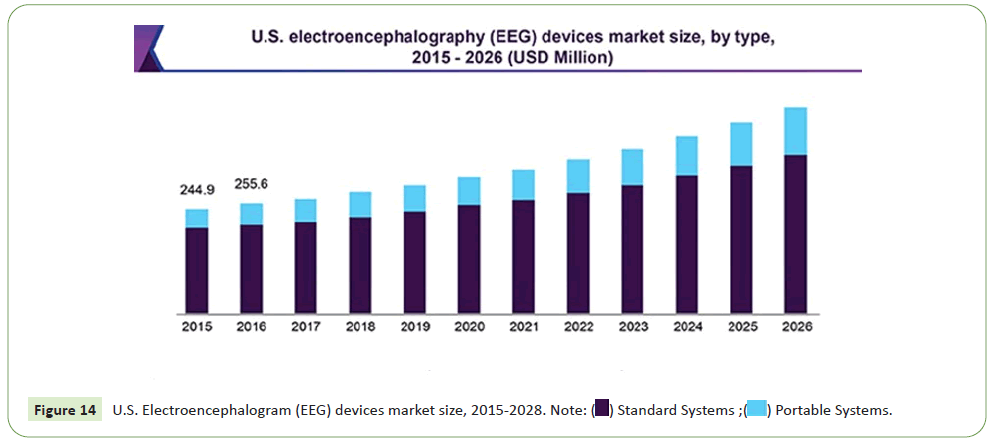
Figure 14: U.S. Electroencephalogram (EEG) devices market size, 2015-2028.
Note: ( ) Standard Systems ;(
) Standard Systems ;( ) Portable Systems.
) Portable Systems.
EEG products are expected to have a high penetration rate as the
technology is necessary for hospitals and patients. This is due to
the overall niche market space EEG technology occupies [68].
Out of all EEG-based companies, there are roughly 14 companies
that provide most of the EEG monitoring, testing and software
to hospitals and clinics [73,74]. While the market is niche and
relatively premature, there is a 9% increase in job demand for
radiologic and MRI technologists who can operate EEG devices
[56]. According to a new study by Report Ocean, the global EEG
devices market size is expected to reach USD $2.03 billion by 2028.
There are a variety of factors that contribute to this increase.
However, a growing incidence of neurovascular disorders and
a significantly rising elderly population contribute to market
growth [69]. The number of future EEG users can be estimated by
looking at the total number of patients with neurological diseases
that can be treated with EEG. For example, the total number of
people with dementia worldwide was reported at 35.6 million
and is expected to double nearly every 20 years to 65.7 million in
2030 and roughly 115.4 million in 2050 (Figure 15) [69,72].
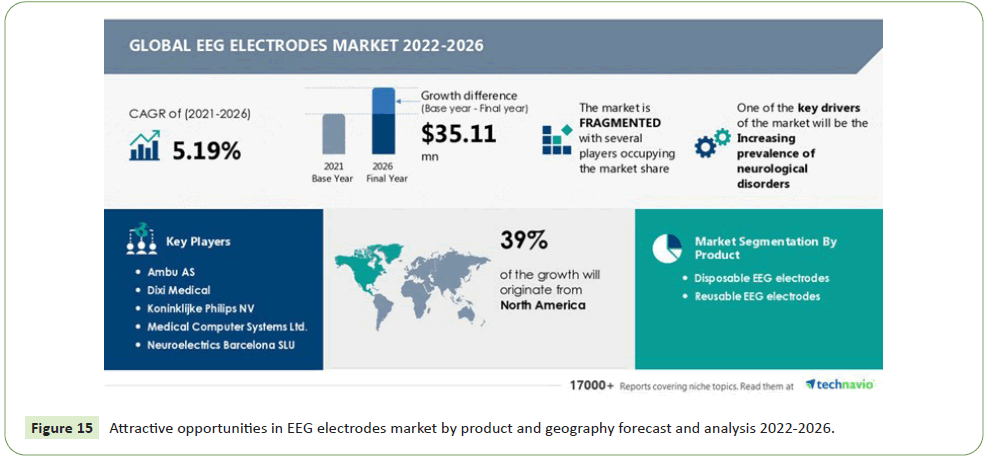
Figure 15: Attractive opportunities in EEG electrodes market by product and geography forecast and analysis 2022-2026.
Conclusion
This paper investigated various applications of EEG-related
ecosystems, including EEG research, devices, companies and
markets. We summarized the conditions of the six applications
of EEG (diagnosis/screening, neuromarketing, drug development,
disability rehabilitation/aged assistance, daily health and
metaverse). The application of drug development, metaverse
and neuromarketing is promising and still has much potential to
grow. Due to EEG's inherent trait, we strongly believe in using
EEG for disease screening and daily health. EEG's application to
diagnosing the disease is still in research. Although EEG-based
machine learning performs well in binary classification, EEG
lacks the specificity to differentiate between abnormal EEG data
and performs poorly on multi-class classification. We found a
very different situation in the research field and the market for
disability rehabilitation and aged assistance. In the research field,
there are various papers with different innovations, while in the
market, there are very few companies. This result implies people
haven't totally accepted the automation AI. In addition, the cost
of the devices might also be a reason. Nevertheless, these six
applications have been developed and are growing very quickly,
especially in diagnosis/screening and daily health. We expect that
there will be more EEG applications and market open up.
Our results show that the EEG market has great potential to grow
very big because machine learning technologies advance the
EEG market forward, which in turn helps everyone in their daily
life. Then the demand for EEG services requires more devices
and applications to be developed. This interactive and mutually
push-forward force compelled the EEG ecosystem to expand in
response.
Further, EEG is being pushed by new applications in brain
computer interface, as shown in the new emergent market of
metaverse. In addition to those new applications, EEG companies
like Dasion build fast algorithms to provide explainable results
and enable multi-class classification with high accuracy.
References
- Cassoobhoy A (2020) EEG (Electroencephalogram).WebMD.
- Hartoyo A, Cadusch P J, Liley, D, HicksD G (2020) Inferring a simple mechanism for alpha-blocking by fitting a neural population model to EEG spectra. PLoS Comput Biol 16: e1007662.
[Crossref] [Google scholar] [PubMed]
- Kraft U (2007) Men tal exercises with neurofeedback may ease symptoms of attention-deficit disorder, epilepsy and depression-and even boost cognition in healthy brains. Sci Am 256-260.
- Mahmud M, Hawellek D, Valjamae A (2009) A Brain-Machine Interface Based on EEG: Extracted Alpha Waves Applied to Mobile Robot. IEEE Explore 28-31.
[Google scholar]
- Kropotov J (2009) Quantitative EEG, Event-Related Potentials and Neurotherapy. (1st edn). Massachusetts: Academic Press Inc, United States.
[Google scholar]
- Kropotov J (2016) Functional Neuromarkers for Psychiatry. (1st edn). Massachusetts: Academic Press Inc, United States.
- Hughes J (1964) Responses from the Visual Cortex of Unanesthetized Monkeys. Int Rev Neurobiol 7.
[Crossref] [Google scholar] [PubMed]
- Stone J L, Hughes J R (2013) Early history of electroencephalography and establishment of the American Clinical Neurophysiology Society. J Clin Neurophysiol 30: 28-44.
[Crossref] [Google scholar] [PubMed]
- Britton JW, Frey LC, Hopp JL, Louis EK, Frey LC (2016) Electroencephalography (EEG): An Introductory Text and Atlas of Normal and Abnormal Findings in Adults, Children, and Infants .Chicago: American Epilepsy Society, United States.
[Google scholar] [PubMed]
- Casson AJ (2014) Artificial Neural Network classification of operator workload with an assessment of time variation and noise-enhancement to increase performance Frontiers in neuroscience .Front Neurosci 8.
- Emotive. (2011) EEG Machine.
- Toyama S, Takano K, Kansaku K (2012) A non-adhesive solid-gel electrode for a non-invasivebrain-machineinterface. Front Neurol 3:114.
[Crossref][Google scholar] [PubMed]
- Nagamine K, Chihara S, Kai H, Kaji H, Nishizawa M (2016) Totally shape-conformable electrode/hydrogel composite for on-skin electrophysiological measurements. Sens Actuators B Chem 237:49-53.
[Google scholar]
- Li G L, Wu J T, Xia Y H, HeQ G, Jin H G (2020) Review of semi-dry electrodes for EEG recording. J Neural Eng 17:051004.
[Crossref] [Google scholar] [PubMed]
- Subramaniyam N (2018) Pitfalls of Filtering the EEG Signal. Sapien Labs.
- Haneef Z, Levin HS, Frost J D Jr, Mizrahi E M (2013) Electroencephalography and quantitative electroencephalography in mild traumatic brain injury. J Neurotrauma 30:653-656.
[Crossref] [Google scholar] [PubMed]
- Pirrone D, Weitschek E, Di PP, De SS, De C MC (2022) EEG Signal Processing and Supervised Machine Learning to Early Diagnose Alzheimer’s Disease. Appl Sci 12: 5413.
[Google scholar]
- Lee S, Hussein, R, Ward R (2021) A Convolutional-recurrent neural network approach to resting-state EEG classification disease. J Neurosci Methods 361:198-282.
[Crossref] [Google scholar] [PubMed]
- Gevins Alan, Smith M E, Linda K, Leong H, Le J (1999) Electroencephalographic imaging of higher brain function. Phil Trans R Soc Lond B3541125-1134.
[Google scholar]
- Christoph M, Denis B (2019) EEG Source Imaging: A Practical Review of the Analysis Steps. Front Neurol 10.
[Crossref] [Google scholar] [PubMed]
- Riera A (2014) Invasive vs Non-Invasive EEG… Ready to become a Cyborg? Neuroelectrics 18.
- EEG (Electroencephalogram)
- Huiskamp G, Agirre-Arrizubieta Z, Leijten F (2010) Regional Differences in the Sensitivity of MEG for Interictal Spikes in Epilepsy . Brain Topogr 23:159-64.
[Crossref] [Google scholar] [PubMed]
- Lai CQ, Ibrahim H, Abd HAI, Abdullah JM (2020) Classification of Non-Severe Traumatic Brain Injury from Resting-State EEG Signal Using LSTM Network with ECOC-SVM. Sensors 20:5234.
[Crossref] [Google scholar] [PubMed]
- Dhillon NS, Sutandi A, Vishwanath M, Lim MM, CaoH, et al. (2021) A Raspberry Pi-Based Traumatic Brain Injury Detection System for Single-Channel Electroencephalogram. Sensors 21:2779.
[Crossref] [Google scholar] [PubMed]
- Thanjavur K, Babul A, Foran B (2021) Recurrent neural network-based acute concussion classifier using raw resting state EEG data. Sci Rep 11:12353.
[Crossref] [Google scholar] [PubMed]
- Bazarian JJ, Elbin R J, Casa D J, Hotz G A, Neville C et al. (2021) Validation of a Machine Learning Brain Electrical Activity-Based Index to Aid in Diagnosing Concussion Among Athletes. JAMA network open 4: e2037349.
[Crossref] [Google scholar] [PubMed]
- Rosas A (2019) Mild Traumatic Brain Injury Assessment Using Functional Connectivity Estimators on Resting State EEG Analysis. ProQuest 11-15.
[Google scholar]
- Lai C Q, Ibrahim H, Abdullah J, Azman A, Abdullah M (2021) Convolutional Neural Network Utilizing Error-Correcting Output Codes Support Vector Machine for Classification of Non-Severe Traumatic Brain Injury From Electroencephalogram Signal. IEEE Access 1-1.
[Google scholar]
- Murphey D (2021) The Utility of EEG in Clinical Trials. CortiCare
- Koyama S, LeBlanc BW, Smith KA9 (2018) An Electroencephalography Bioassay for Preclinical Testing of Analgesic Efficacy. Sci Rep 8:16402.
[Google scholar]
- Laura B, Heidrun P, Katja H (2019) Exploratory EEG studies for the assessment of neurological liabilities in conscious dogs in early drug development. J Pharmacol Toxicol Methods 98:106581.
[Crossref] [Google scholar] [PubMed]
- Lee Y, Seo HW, Lee KJ, Jang JW, Kim S (2020) A Microfluidic System for Stable and Continuous EEG Monitoring from Multiple Larval Zebrafish. Sensors 20:5903.
[Crossref] [Google scholar] [PubMed]
- Hua X, Church K, Walker W (2021) Quantitative EEG as a translational measure for the assessment of ATH-1017 neurophysiological changes in mild-to-moderate Alzheimer’s disease. Alzheimers Dement 17: e056531.
[Google scholar]
- Biondi A, Rocchi L, Santoro V (2022) Spontaneous and TMS-related EEG changes as new biomarkers to measure anti-epileptic drug effects. Sci Rep 12:1919.
[Crossref] [Google scholar] [PubMed]
- Staner L (2002) Sleep-wake mechanisms and drug discovery: sleep EEG as a tool for the development of CNS-acting drugs. Dialogues Clin Neurosci 4:342-350.
[Crossref] [Google scholar] [PubMed]
- Zhang X, Yao Lina, Huang C (2017) Intent Recognition in Smart Living through Deep Recurrent Neural Networks. arXiv 1702:06830. [Crossref] [Google scholar] [PubMed]
- Dev A, Rahman MA, Mamun N (2018) Design of an EEG-Based Brain Controlled Wheelchair for Quadriplegic Patients. IEEE explore. 1-5.
[Google scholar]
- Silva DS E, Cardoso A, Lamounier E (2018) A Virtual Environment-Based Training System for a Blind Wheelchair User Through Use of Three-Dimensional Audio Supported by Electroencephalography. Telemed J E Health 24:614-620.
[Crossref] [Google scholar] [PubMed]
- Mroczkowska D, Tyras S (2018) The use of EEG-Neurofeedback in rehabilitation for speech disorders in patients after stroke. Psychiatria 15: 199-205.
- Nafea M, Hisham A B, Abdul KNA, Che HFK, (2018) Brainwave-Controlled System for Smart Home Applications. IEEE explore 75-80.
[Google scholar]
- KDCJ P (2018) Development of an EEG signal based brain machine interface for a metal meal assistance robot.
[Google scholar]
- Casey A, Azhar H, Grzes M, Sakel M (2021) BCI controlled robotic arms as assistance to the rehabilitation of neurologically disabled patients. Disability and rehabilitation. Assistive technology 16:525-537.
[Crossref] [Google scholar] [PubMed]
- Jacob S, Menon VG, Al-Turjman F, P G V , Mostarda L (2019) Artificial Muscle Intelligence System With Deep Learning for Post-Stroke Assistance and Rehabilitation. In IEEE Access 7: 133463-133473.
[Google scholar]
- Barios J A, Ezquerro S, Bertomeu-Motos A, Catalan JM, Sanchez-Aparicio JM et al, (2021). Movement-Related EEG Oscillations of Contralesional Hemisphere Discloses Compensation Mechanisms of Severely Affected Motor Chronic Stroke Patients. Int J Neural Syst 31:2150053.
[Crossref] [Google scholar] [PubMed]
- Chinta Babu, Madhava M (2021) Brain Computer Interface - EEG Based Imagined Word Prediction Using Convolutional Neural Network Visual Stimuli for Speech Disability. Research square
[Google scholar]
- Dziuban L (2009) Mind-controlled wheelchair prototype is truly, insanely awesome.
- Neurosurgery. (2019) Parietal Lobe. Operative Neurosurgery.
- Mashrur F R (2021) MarketBrain: An EEG based intelligent consumer preference prediction system. Annu Int Conf IEEE Eng Med Biol Soc 808-811.
[Crossref] [Google scholar] [PubMed]
- Ciorciari J, Pfeifer J, Gountas J (2019) An EEG Study on Emotional Intelligence and Advertising Message Effectiveness. Behav Sci 9:88.
[Crossref] [Google scholar] [PubMed]
- Sun L, Zhao Y, Ling B (2020) The Joint Influence of Online Rating and Product Price on Purchase Decision: An EEG Study. Psychol Res Behav Manag 13:291-301.
[Google scholar]
- Aldayel M, Ykhlef M, Al-Nafjan (2020) A. Deep Learning for EEG-Based Preference Classification in Neuromarketing. Appl Sci 10:1525.
- Phutela N, Abhilash P, Sreevathsan K (2022) Intelligent analysis of EEG signals to assess consumer decisions: A Study on Neuromarketing. arXiv 2206.07484v1.
[Google scholar]
- Golnar-Nik P, Farashi S, Safari M S (2019) The application of EEG power for the prediction and interpretation of consumer decision-making: A neuromarketing study. Physiol Behav 207: 90-98.
[Crossref] [Google scholar] [PubMed]
- Bryn Farnsworth. (2019) EEG headset prices -an overview of 15+ EEG devices. Imotions.
- U.S Bureau of Labor Statistics. (2022) Radiologic and MRI Technologists.
- Hanshu C, Jiashuo H, Yunfei C, Xiaocong S, Ziyang W et al. (2018) "A Pervasive Approach to EEG-Based Depression Detection". Complexity 13.
[Crossref]
- Mousavi S, Afghah F, Acharya UR (2019) SleepEEGNet: Automated sleep stage scoring with sequence to sequence deep learning approach. PloS one 14:e0216456.
[Google Scholar] [Crossref]
- Satapathy SK, Loganathan D (2021) Prognosis of automated sleep staging based on two-layer ensemble learning stacking model using single-channel EEG signal. Soft Comput 25:15445-15462.
[Google Scholar] [Crossref]
- Melentev N (2020) eSports Players Professional Level and Tiredness Prediction using EEG and Machine Learning. IEEE SENSORS 1-4.
[Google Scholar] [Crossref]
- Liu B, Chang H, Peng K, Wang X (2022) An End-to-End Depression Recognition Method Based on EEGNet. Front Psychiatry 13:864393.
[Google Scholar] [Crossref]
- Definitive Healthcare. (2022) How many hospitals are in the U.S.?.
- Vortmann L M, Kroll F, Putze F (2019) EEG-Based Classification of Internally- and Externally-Directed Attention in an Augmented Reality Paradigm. Fron Hum Neurosci 13:348.
[Google Scholar] [Crossref]
- Amoolya G, KK A, Sai V S, Das G, Geeta G J, George SN (2021) EEG-Based Emotion Recognition and Its Interface with Augmented Reality. Appl Soft Comput 187:41-56
[Google Scholar] [Crossref]
- Thampi SM, Lloret MJ, Fernando X, Boppana R, Geetha S, et al. (2021) Applied Soft Computing and Communication Networks. Berlin: Springer, Germany.
[Google Scholar]
- Liu W, Zeng Y (2022) "Motor Imagery Tasks EEG Signals Classification Using ResNet with Multi-Time-Frequency Representation". IEEEexplore 2026-2029.
[Google Scholar] [Crossref]
- Guo H, Gao W (2022) Metaverse-Powered Experiential Situational English-Teaching Design: An Emotion-Based Analysis Method. Front Psychol 13:859159.
[Google Scholar] [Crossref]
- Hilkman D, Van M W, Mess W H, Van MV (2018) The Use of Continuous EEG Monitoring in Intensive Care Units in The Netherlands: A National Survey. J Neurocrit Care 29: 195-202.
[Google Scholar] [Crossref] [PubMed]
- Grand View Research. (2022) Electroencephalography devices market size report, 2019-2026.
- Yahoo. (2021) EEG devices market forecast to 2028-COVID-19 impact and global analysis by product; application; device type; end user, and geography.
- Lee SH, Lee YE, Lee SW (2022) Toward Imagined Speech based Smart Communication System: Potential Applications on Metaverse Conditions. arxiv 1-4.
[Google Scholar] [Crossref]
- Seok HH, Jung WP, Seong J C (2022) Effectiveness of the VR Cognitive Training for Symptom Relief in Patients with ADHD. J Web Eng 21.
[Google Scholar] [Crossref]
- Technavio (2022) EEG electrodes market size to grow by USD 35.11 million: Increasing prevalence of neurological disorders will drive growth.
- Obeid I, Picone J (2016) The Temple University Hospital EEG Data Corpus. Front Neurosci 10:196.
[Google Scholar] [Crossref]
- Farnsworth B (2017) Top 14 EEG hardware companies [ranked].Imotions.
- Westhall E, Rossetti A O, Van R A F, Wesenberg KT, Horn J, et al . (2016) Standardized EEG interpretation accurately predicts prognosis after cardiac arrest. Neurology 86: 1482-1490.
[Google Scholar] [Crossref]
Citation: Gu W, Yang B, Chang R (2022) Machine Learning-Based Electroencephalogram (EEG) Applications and its Marketing. J Neurol Neurosci Vol. 14 No.S6:002
















 ) Deep Learning; (
) Deep Learning; ( ) Clustering ;(
) Clustering ;( ) Classification; (
) Classification; ( ) Dimensionally
Reduction; (
) Dimensionally
Reduction; ( ) Reinforcement Learning. Abbreviations: ANN: Artificial Neural Network; LSTM: Long Short-Term Memory; SARSA:
State-Action-Reward-State-Action; RNN: Recurrent Neural Network; KNN: k Nearest Neighbour; SORN: Side-Output Residual Network;
CNN: Convolutional Neural Network; SVM: Support Vector Machine; PCA: Principal Component Analysis; GRU: Gated Recurrent Unit; ICA:
Independent Component Analysis.
) Reinforcement Learning. Abbreviations: ANN: Artificial Neural Network; LSTM: Long Short-Term Memory; SARSA:
State-Action-Reward-State-Action; RNN: Recurrent Neural Network; KNN: k Nearest Neighbour; SORN: Side-Output Residual Network;
CNN: Convolutional Neural Network; SVM: Support Vector Machine; PCA: Principal Component Analysis; GRU: Gated Recurrent Unit; ICA:
Independent Component Analysis.
 ) Disability Assistance; (
) Disability Assistance; ( ) Neuromarketing; (
) Neuromarketing; ( ) Daily
Health; (
) Daily
Health; ( ) Metaverse; (
) Metaverse; ( ) Drug Development; (
) Drug Development; ( ) Diagnosis.
) Diagnosis.

 ) Sleep;
(
) Sleep;
( ) Stress/ Anxiety; (
) Stress/ Anxiety; ( ) Depression; (
) Depression; ( ) PTSD; (
) PTSD; ( ) Pain Relief;
(
) Pain Relief;
( ) Mental Fitness; (
) Mental Fitness; ( ) Monitoring.
) Monitoring.
 ) Standard Systems ;(
) Standard Systems ;( ) Portable Systems.
) Portable Systems.